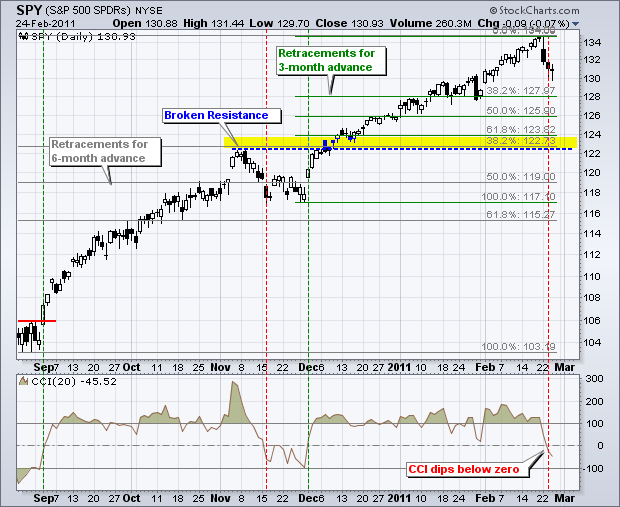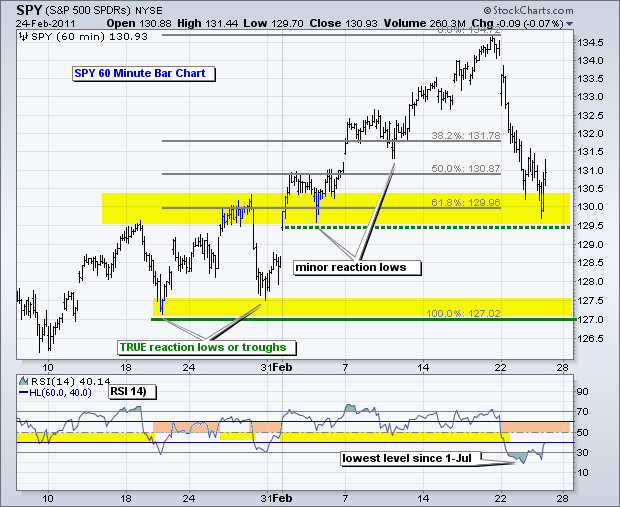On the 60-minute chart, SPY continues to firm at support around 130. This support zone stems from broken resistance levels and a 62% retracement of the advance from the late January lows to the mid February highs. There have been a couple of bounce attempts in the last two days, but nothing has stuck. Buying now would be part of the mean-reversion trade. The bigger trend is up and SPY is short-term oversold. A reversion back towards the mean would carry the ETF towards the 132.5-133 area at least. The VIX is also flashing a bullish mean reversion signal. I have two issues with this mean-reversion trade right now. First, oil remains at relatively high levels after a 6-day 12.5% spike. It is not so much the absolute level that is worrisome, but the suddenness and sharpness of the spike. This uncertainty could keep buyers on the sidelines. Second, it is Friday and we are heading into the weekend. The situations in the Middle East and North Africa remain fluid. A lot can happened in just a few days. Even if stock bounce during the day on Friday, I would not be surprised to see some late afternoon profit taking or position squaring ahead of the weekend.

Key Economic Reports/Events:
Feb 25 - 08:30 - GDP
Feb 25 - 09:55 - Michigan Sentiment
Charts of Interest: Tuesday and Thursday in separate post.
-----------------------------------------------------------------------------
This commentary and charts-of-interest are designed to stimulate thinking. This analysis is not a recommendation to buy, sell, hold or sell short any security (stock ETF or otherwise). We all need to think for ourselves when it comes to trading our own accounts. First, it is the only way to really learn. Second, we are the only ones responsible for our decisions. Think of these charts as food for further analysis. Before making a trade, it is important to have a plan. Plan the trade and trade the plan. Among other things, this includes setting a trigger level, a target area and a stop-loss level. It is also important to plan for three possible price movements: advance, decline or sideways. Have a plan for all three scenarios BEFORE making the trade. Consider possible holding times. And finally, look at overall market conditions and sector/industry performance.

